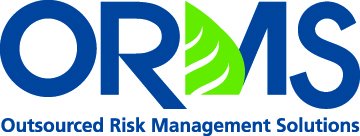Avoid a Fright With the 5 Most Common Environmental Reviews
Storage Tanks Present a “HOT” Environmental Risk
September 10, 2019Giving Thanks for a Bountiful CRE Market
November 21, 2019Avoid a Fright With the 5 Most Common Environmental Reviews
Environmental due diligence is a critical part of any commercial real estate transaction. However, selecting the best method to use in your specific scenario can be confusing and frightful!
The Comprehensive Environmental Response, Compensation, and Liability Act (CERCLA) provides property owners, innocent landowners, and prospective owners with certain protections from liability resulting from prior environmental contamination. However, the owner must demonstrate that they performed proper due diligence in accordance with the federal All Appropriate Inquiry (AAI) standard, prior to the acquisition of the property.
To avoid a nasty trick, get familiar with these 5 types of environmental reviews, ordered from the simplest and most cost-effective to the most complex and expensive:
- Environmental Questionnaire: The Environmental Questionnaire is a basic screening tool many lenders use during underwriting. Although fast and easy, the questionnaire should not be considered a reliable source of information and doesn’t protect the parties from CERCLA liability. If the initial screening uncovers any potential environmental contamination on the subject property, the next step is to consult with an environmental professional to perform a more rigorous risk assessment, such as a Transaction Screen or Phase I Environmental Site Assessment.
- Transaction Screen Assessment: Also known as an Environmental Transaction Screen, the Transaction Screen Assessment is a cost-effective method of assessing potential environmental risks on a low-risk property. It covers many of the bases of the more comprehensive Phase I Environmental Site Assessment (ESA), including a site visit, a review of regulatory records, interviews with key individuals related to the property, and an abbreviated search of the property’s historical record. The Transaction Screen is governed by an ASTM Standard Practice, 1528-14 Standard Practice for Limited Environmental Due Diligence: Transaction Screen Process. However, the Transaction Screen does not meet the AAI standard and thus doesn’t provide owners with protection from liability under CERCLA.
- Desktop Review: An Environmental Desktop Review (or Report) is another cost-effective method of assessing a property’s potential environmental risk. Limited in scope, the Desktop Review does not include a site visit to the property. Your environmental professional will customize the Desktop Review to the needs of the specific transaction, but it typically includes a government database search, a review of historical records (e.g., Sanborn maps, aerial photographs, and municipal records), and a series of environmental questionnaires. If concerns are unearthed during this process, the next step is to obtain a Phase I ESA. However, this level of due diligence does provide a lender with a lot of valuable information to make a risk decision.
- Phase I Environmental Site Assessment: The Phase I ESA is a critical tool in any commercial lender’s due diligence toolbox. It is more substantive than a Transaction Screen or Desktop Review, and typically involves a review of property records, a site inspection, and interviews with the current property owners and occupants, local government officials, and nearby property owners. A Phase I must be performed by a certified environmental professional, in accordance with ASTM E1527-13: Standard Practice for Environmental Site Assessments: Phase I Environmental Site Assessment Process.
- Phase II Environmental Site Assessment: If the Phase I assessment reveals a recognized environmental condition (REC) or the potential for contamination from hazardous materials or petroleum-based products on the property, a Phase II ESA will often be required. The Phase II is a more expensive and comprehensive property assessment that often includes soil and/or water sampling. The assessment is customized to the unique project, and scope and expense range widely depending on the nature and levels of contamination. As with the Transaction Screen and Phase I, the Phase II is governed by an ASTM Standard Practice, in this case, ASTM E1903 – 11: Standard Practice for Environmental Site Assessments: Phase II Environmental Site Assessment Process.
Depending on the historical use of the property and any known environmental risks, we recommend beginning with a simple Questionnaire or Desktop Review to uncover any potential environmental concerns, before performing a more rigorous site assessment. That said if there is any reason for concern you should consult with a qualified environmental professional at the earliest stages of the transaction. When it comes to managing scary environmental risks, it is best to be cautious than caught unprepared!
